There are still a lot of questions to be answered about the arrest and death of Sandra Bland, who recently died tragically after three days in a Texas jail. A video released by the Texas Department of Public Safety captured a portion of the confrontation between Bland and a police officer after she was pulled over on July 10 for a routine traffic stop. Perhaps most striking is how quickly the situation escalated, leading to the forcible arrest of Bland, and culminating in her untimely demise. It’s also a reminder of how important it is to know your legal rights, and what is and is not permissible when you are pulled over by a police officer.
There’s the law—what is legally permissible for the police officer and the motorist to do. And then there’s the sad reality of how such encounters with the police sometimes play out in practice. Given that reality, there are some things to keep in mind in order to try to prevent the situation from becoming contentious or dangerous. To be clear, as law-enforcement professionals, the police should be well-trained to de-escalate and diffuse interactions with the public whenever possible, particularly since most people don’t enjoy being pulled over, and especially in light of the already contentious relationship between the police and communities of color across the country. But here are some things for all of us to consider:
1. You have the right to remain silent. That is true whether you’ve just been temporarily detained or formally arrested. There are some instances, like during a traffic stop, where you must provide your license, registration, insurance, and name, when asked. And there are some states where you are required to answer basic identifying questions (name and address) by the police. But you’re not required to give a statement beyond that. You can simply say, “I choose not to answer that question.”
2. You do not have to consent to a search of yourself or your car. There are many situations in which the police will pull someone over and ask—often casually—whether the driver would mind if they “take a look” inside the car. But you don’t have to give that permission. Keep in mind, however, that if the police have probable cause to search your car, or if you’ve been placed under arrest, they can search you, and sometimes your vehicle, whether you give your consent or not.
3. If you are arrested, you have the right to ask for an attorney and should do so immediately. If you have only been stopped temporarily, you’re not entitled to an attorney at that point. But if you’re being held for an extended period of time, either they’re going to have to let you go or place you under arrest.
4. If you’ve been stopped (but not arrested), you have the right to ask the police whether you’re free to go. If they say yes, you should calmly walk — not run — away from the scene.
5. As difficult as it can be, try to remain calm and be as polite as you can. Even if your rights have been violated, you’re not going to argue your way out of the problem. It’s also always a good idea to make sure the police can see your hands, and that you don’t make sudden movements, interfere with what the police are trying to do, or give false statements. In other words, don’t give the police an excuse to mistreat you or pile on additional charges.
Generally, the best advice is to pay close attention to the situation whenever you are interacting with a police officer. If you’ve had a negative experience, or believe that your constitutional rights have been compromised, you should take note of all of the circumstances surrounding the encounter, including the police officer’s name and badge number, and pursue a complaint afterwards.
Jason Williamson is a lawyer with the ACLU.
Trayvon Martin
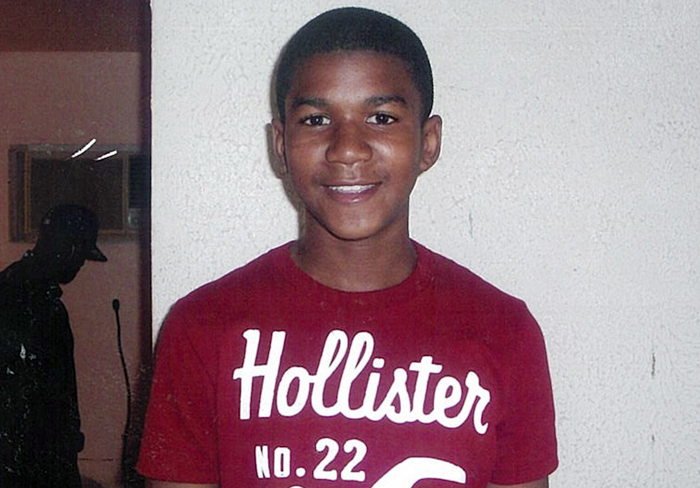
Feb. 26, 2012 Neighborhood watch volunteer George Zimmerman fatally shoots unarmed 17-yearold Trayvon Martin after an altercation in a Sanford, Fla., subdivision. The incident sparked a national conversation about race and prompted President Obama to say that were he to have a son, “he’d look like Trayvon.” Zimmerman, who argued that he acted in self-defense, was acquitted of second-degree murder and manslaughter in July 2013.
Ernest Satterwhite
Feb. 9, 2014 Ernest Satterwhite, 68, is shot and killed in his driveway by a white public-safety officer in North Augusta, S.C., following a slow-speed car chase. Justin Craven fired multiple rounds through the driver-side door of the vehicle. The officer alleges that Satterwhite reached for his weapon; Satterwhite’s family disputes the allegation. Craven was charged with a felony for discharging his gun into an occupied vehicle on April 7, the same day Michael Slager was charged with murdering Walter Scott. He faces up to 10 years in prison.
Dontre Hamilton

April 30, 2014 Milwaukee police officer Christopher Manney fatally shoots Dontre Hamilton, an unarmed 31-year-old African American with a history of mental illness, in a downtown park. Manney alleged that Hamilton, who appeared to be homeless, attempted to grab his baton during a pat down. Manney says he shot Hamilton 14 times in self-defense. Manney was fired in October but was not charged in the shooting.
Eric Garner
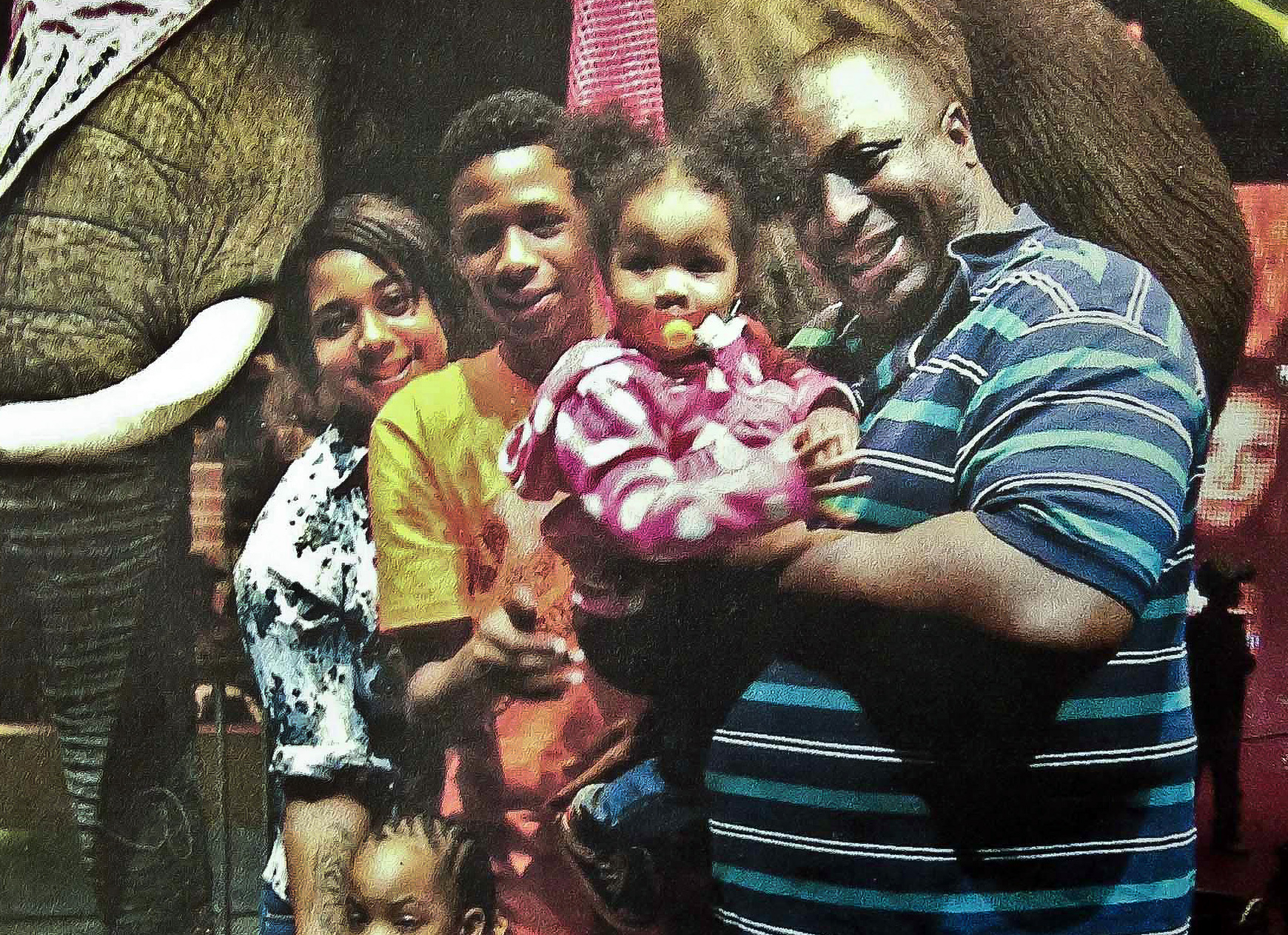
July 17, 2014 Eric Garner, 43, dies after being wrestled to the ground as New York City police attempted to arrest him for selling illegal cigarettes. In a cell-phone video recorded by a bystander, Garner can be heard repeatedly saying, “I can’t breathe.” The phrase was soon adopted as a rallying cry by protesters. On Dec. 3, a grand jury decided not to indict NYPD officer Daniel Pantaleo in Garner’s death.
John Crawford III

Aug. 5, 2014 John Crawford III, 22, is shot inside a Walmart in Beavercreek, Ohio, after picking up an air rifle from the shelf. While police say they repeatedly asked Crawford, who was black, to drop the gun, surveillance video shows that police shot the man soon after approaching him.
Michael Brown

Aug. 9, 2014 Darren Wilson, a white Ferguson, Mo., police officer, fatally shoots unarmed 18-yearold Michael Brown, setting off months of unrest in the St. Louis area. Protests erupted nationwide in November, when Wilson was not indicted in Brown’s death. But the shooting prompted a Justice Department investigation of the Ferguson Police Department. In March, after the scathing report found instances of overt racism among officers and a pattern of arrests targeting black residents, Ferguson’s police chief and city manager resigned.
Levar Jones
Sept. 4, 2014 Levar Jones, 35, is shot multiple times by 31-year-old Sean Groubert, a white South Carolina state trooper, seconds after being stopped for a seat-belt violation, all of which was caught on the officer’s dash cam. Jones, who was black and unarmed, survived and can be heard on a video asking, “Why did you shoot me?” Groubert was later fired and charged with assault and battery, which carries a sentence of 20 years in prison. A verdict is expected later this year.
Tamir Rice

Nov. 22, 2014 Tamir Rice, 12, is fatally shot and killed in a Cleveland park after police responded to a 911 call reporting a person with a gun. The caller warned that the gun may have been fake, but the officers say they didn’t know that. Officer Timothy Loehmann shot Rice within seconds of arriving on the scene. Rice’s gun turned out to have been a toy. A group of political and religious leaders have called for criminal charges to be brought against the officers involved, and a grand jury plans to hear evidence in the case.
Rumain Brisbon
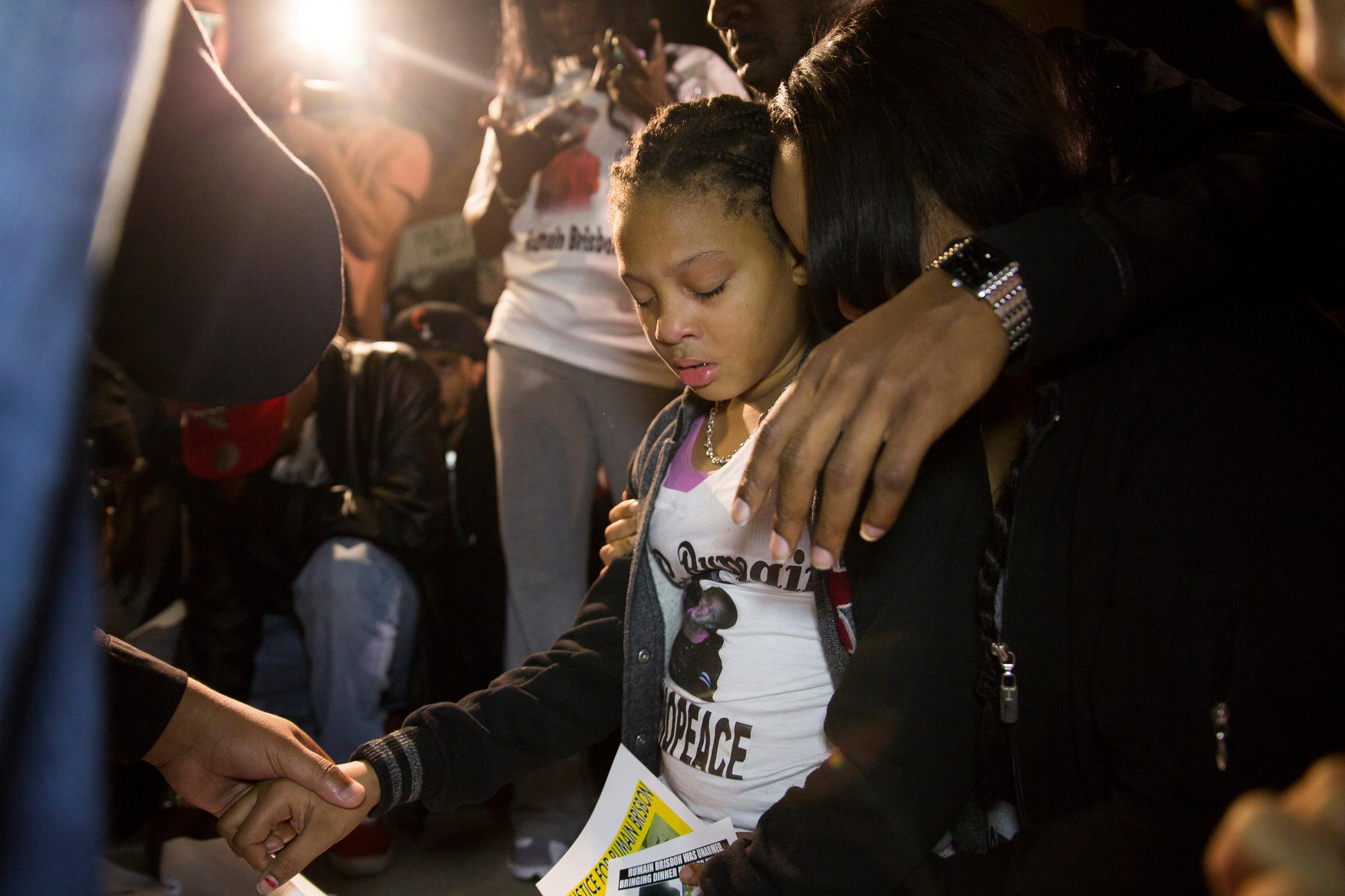
Dec. 2, 2014 Rumain Brisbon, 34, is shot and killed by a Phoenix police officer following a drug-related traffic stop in which Brisbon, who was black, fled, refused arrest and appeared to be reaching for a weapon. Brisbon was shot by Mark Rine, a 30-year-old white officer. The incident set off several demonstrations in downtown Phoenix. On April 1, a Maricopa County attorney announced that criminal charges would not be brought against Rine.
Charly “Africa” Leundeu Keunang
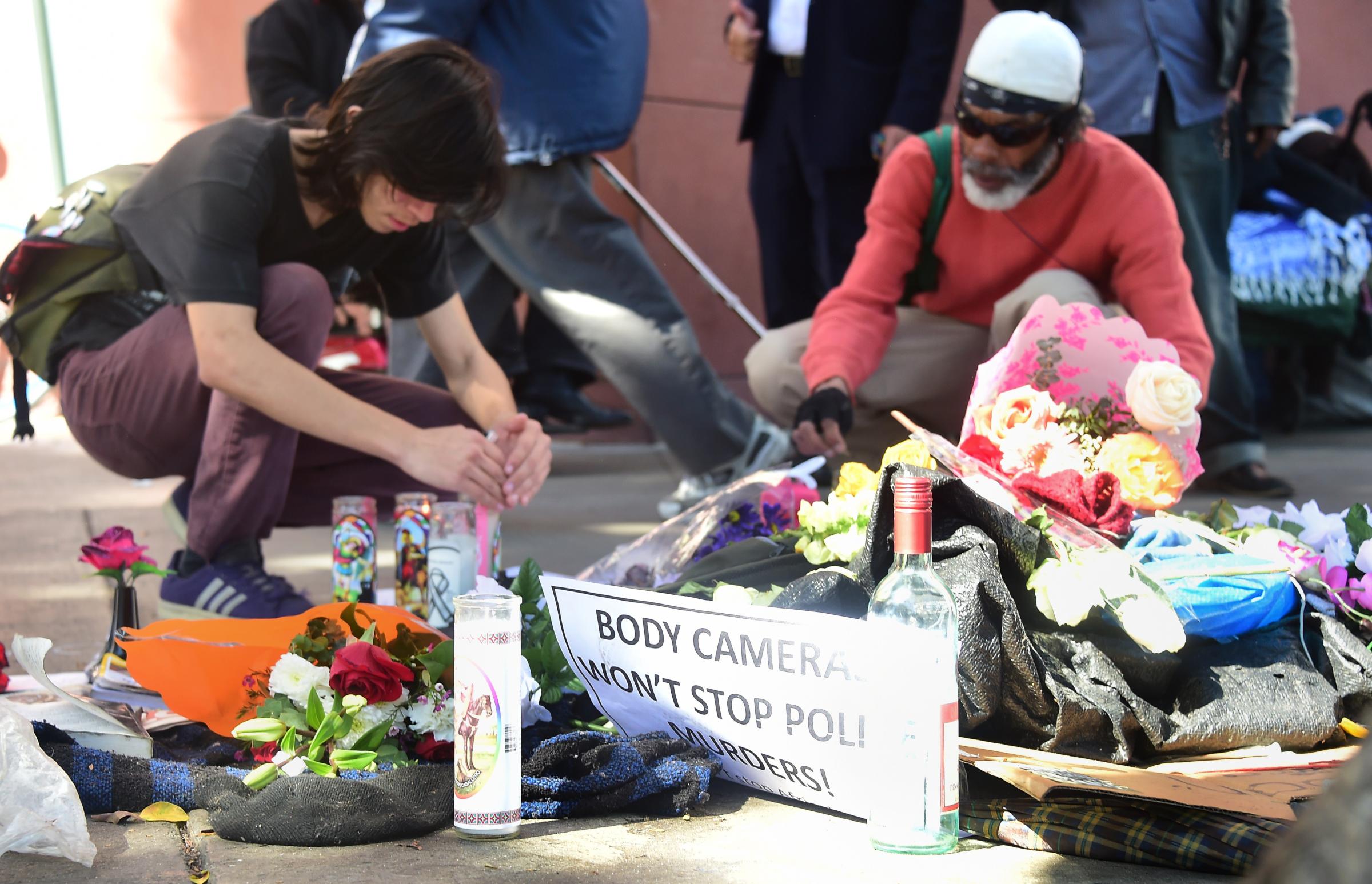
March 1, 2015 Los Angeles police officers shoot and kill a black homeless man named Charly “Africa” Leundeu Keunang, following a confrontation in the city’s Skid Row, an area with a heavy concentration of homeless people. Officers said the man attempted to take one of their guns.
Naeschylus Vinzant
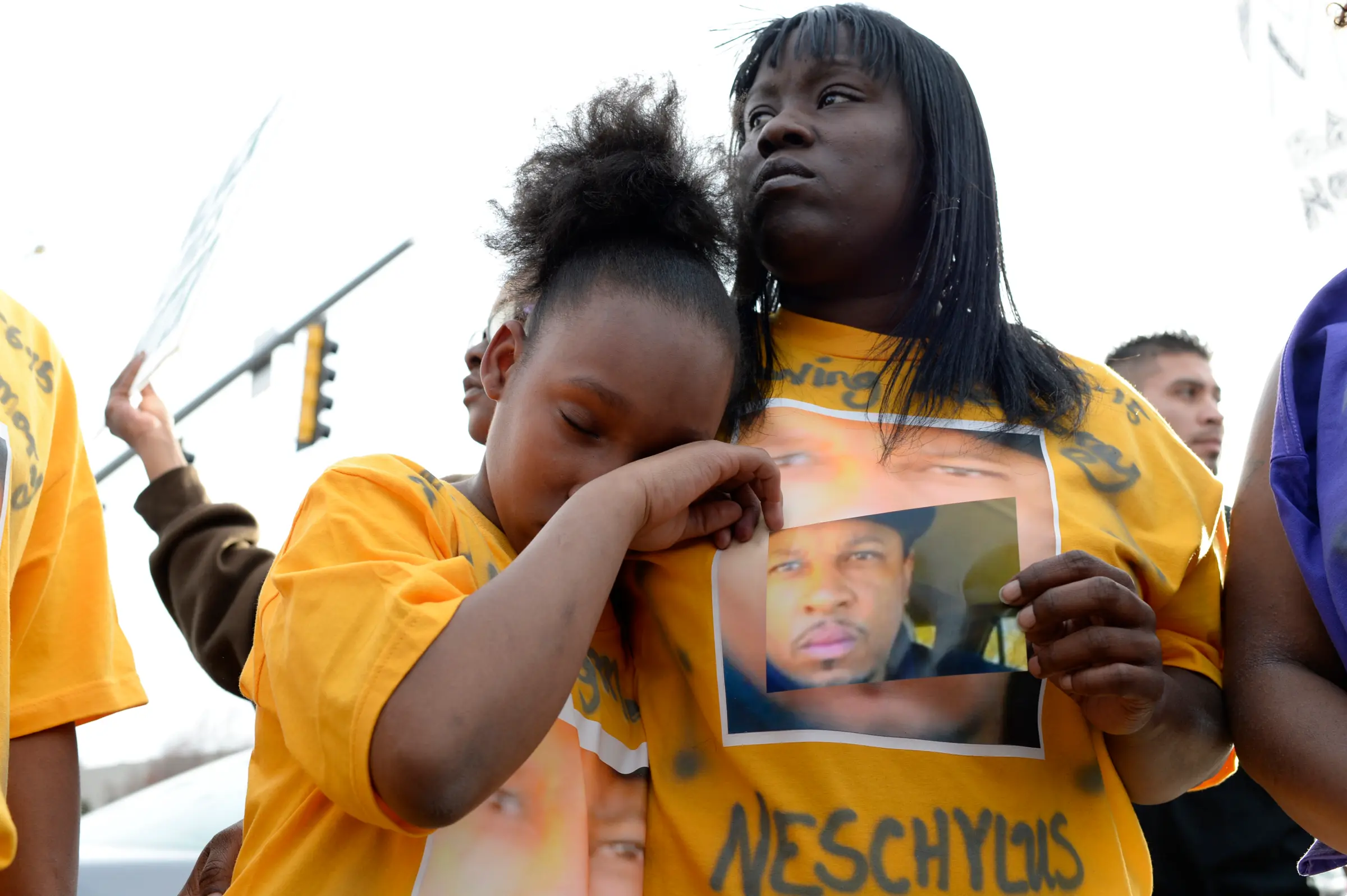
March 6, 2015 Naeschylus Vinzant, a 37-yearold unarmed black man, is shot in the chest and killed by Paul Jerothe, a police officer in Aurora, Colo. At the time of the shooting, Vinzant was violating his parole and had removed his ankle bracelet. He also had a violent criminal history but was unarmed as officers tried to arrest him. Jerothe, a SWAT team medic officer, has been placed on administrative leave pending an investigation.
Tony Robinson
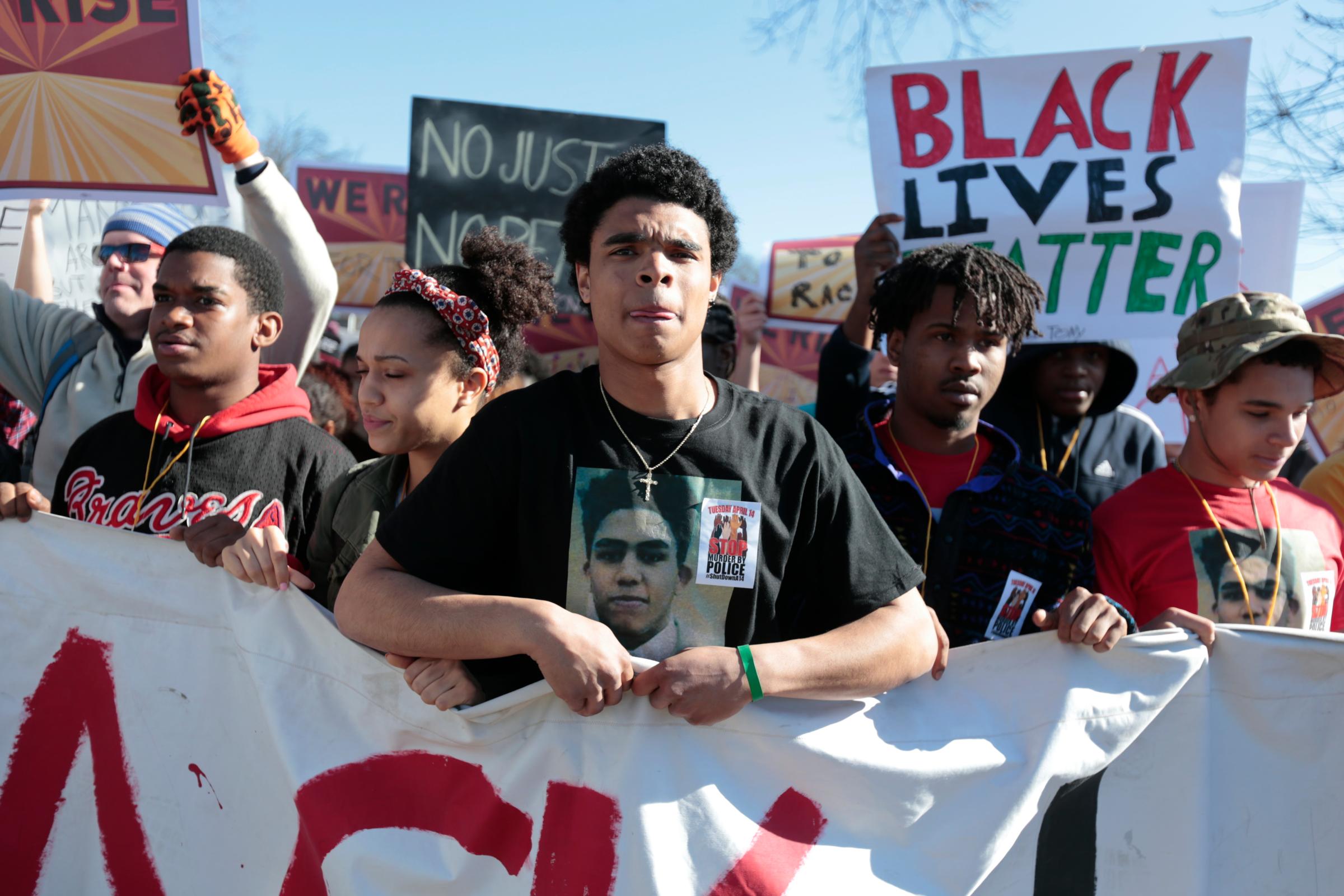
March 6, 2015 Tony Robinson, a 19-year-old biracial man, is shot by a white Madison, Wis., police officer after Robinson was allegedly jumping in and out of traffic. Matt Kenny, a 45-year-old officer who was exonerated in a 2007 shooting of an African-American man, got into an altercation with Robinson when he entered an apartment in which Robinson was reportedly acting aggressively. Kenny, who says he was attacked by Robinson, was placed on administrative leave with pay pending the results of an investigation.
Anthony Hill

March 9, 2015 Anthony Hill, a black 27-yearold Air Force veteran, is shot and killed in Chamblee, Ga., by Robert Olsen, a white DeKalb County Police Department officer. Hill was naked and unarmed at the time of the incident and was apparently knocking on multiple apartment doors inside a housing complex. Olsen has been placed on leave. An investigation by the Georgia Bureau of Investigation is currently under way.
Walter Scott
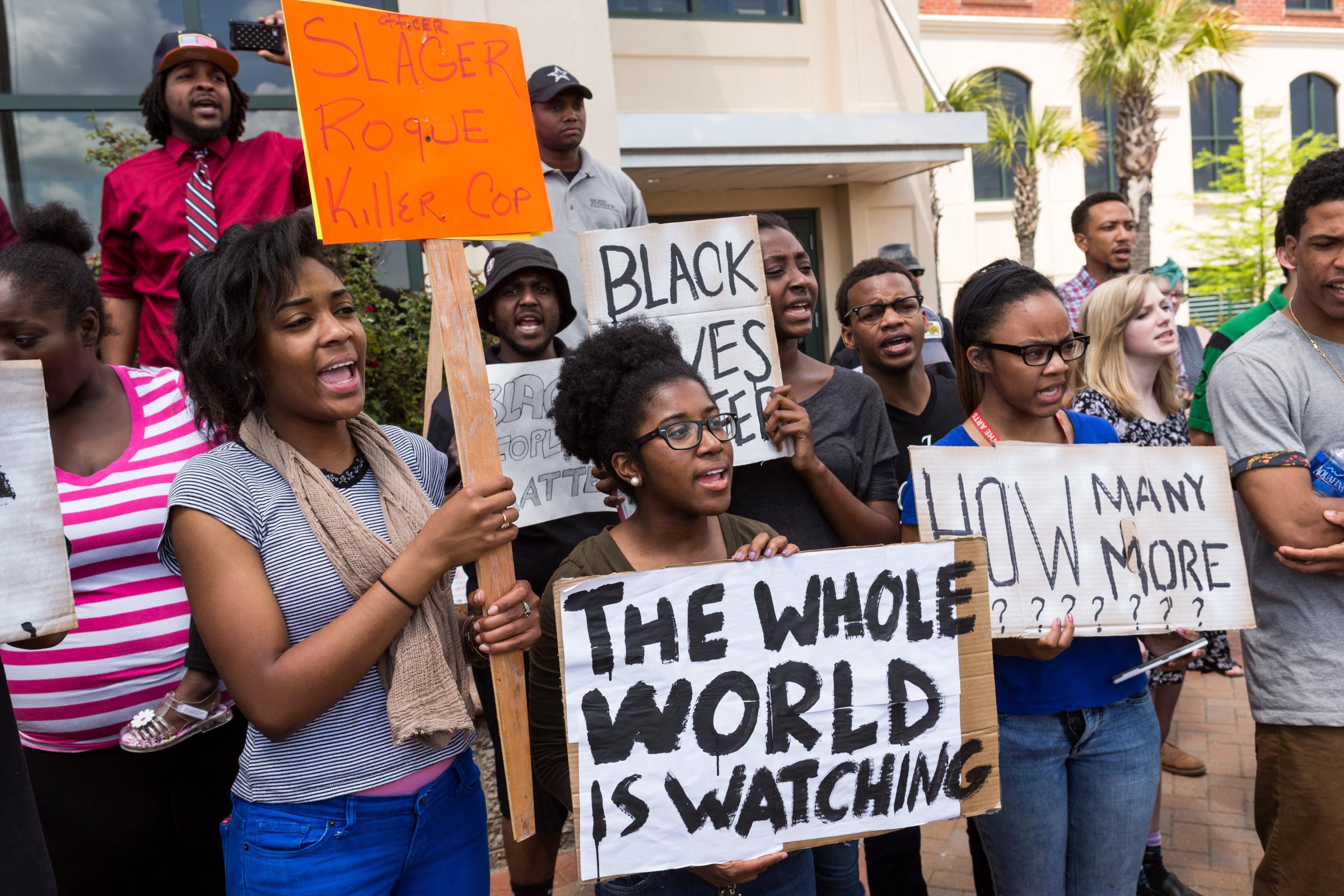
April 4, 2015 Walter Scott, a 50-year-old black man, is shot and killed as he’s apparently fleeing North Charleston officer Michael Slager, 33. Slager, who is white, alleges that Scott reached for his Taser. A video recorded by a bystander appears to show Scott running away from the officer as he’s shot in the back eight times.
Read next: ‘Insight Policing’ Could Have Helped Sandra Bland
More Must-Reads from TIME
- Donald Trump Is TIME's 2024 Person of the Year
- Why We Chose Trump as Person of the Year
- Is Intermittent Fasting Good or Bad for You?
- The 100 Must-Read Books of 2024
- The 20 Best Christmas TV Episodes
- Column: If Optimism Feels Ridiculous Now, Try Hope
- The Future of Climate Action Is Trade Policy
- Merle Bombardieri Is Helping People Make the Baby Decision
Contact us at letters@time.com